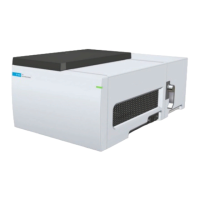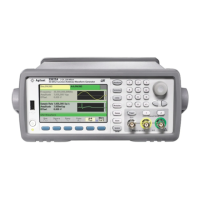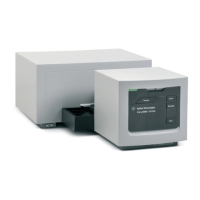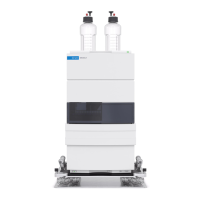96
Chapter 3 Features and Functions
Output Configuration
3
• Front-Panel Operation: To set the output frequency, press the
button, then
the Frequency softkey for the selected function. Then
use the knob or numeric keypad to enter the desired frequency. To set
the waveform period instead, press
and then press the
Frequency softkey to toggle to the setting to Period.
• Remote Interface Operation:
[SOURce[1|2]:]FREQuency {<frequency>|MINimum|MAXimum}
You can also use the
APPLy
command to select the function, frequency
,
amplitude, and offset with a single command.
Output Amplitude
The default amplitude is 100 mVpp (into 50 ohms) for all functions.
• Offset Voltage Limitations: The relationship between output
amplitude and offset voltage is shown below. Vmax is the maximum
peak voltage for the selected output termination (±5 volts for a 50
load or ±10 volts for a high-impedance load).
Vpp <
2(Vmax –|Voffset|)
• Limits Due to Output Termination: If you change the output
termination setting, the displayed output amplitude will be adjusted
to reflect the new setting, but the actual amplitude of the output signal
will not be changed. For example, if you set the amplitude
to 10 Vpp
and then change the output termination from 50 ohms to “high
impedance”, the amplitude displayed on the waveform generator’s
front-panel will double to 20 Vpp. If you change from “high
impedance” to 50 ohms, the displayed amplitude will drop in half. For
more information, see “Output Termination” on page 101.
• Limits Due to Units Selection: In some cases, the amplitude limits
are determined by the output units selected. This might occur when
the units are Vrms or dBm due to the differences in crest factor for
the various output functions. For example, if you output a 5 Vrms
square wave (into 50 ohms) and then change to the sine wave
function, the waveform generator will automatically adjust the
output amplitude to 3.536 Vrms (the upper limit for sine waves in
Vrms).
